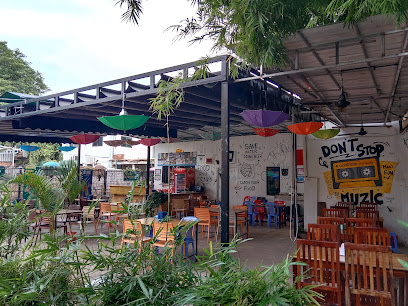
Angkor Wat: A Timeless Temple City
Explore Angkor Wat, the magnificent temple city in Cambodia, a UNESCO World Heritage Site showcasing Khmer architecture and rich history.
Angkor Wat, a UNESCO World Heritage site in Cambodia, is one of the largest religious monuments in the world. Originally built in the 12th century as a Hindu temple dedicated to Vishnu, it later transitioned into a Buddhist temple. Its stunning Khmer architecture, intricate carvings, and historical significance make it a must-see destination.
A brief summary to Angkor Wat
- Krong Siem Reap, KH
Local tips
- Purchase your Angkor Pass in advance online or at the official ticket center to avoid queues.
- Dress respectfully, covering shoulders and knees, as Angkor Wat is a religious site.
- Arrive early for sunrise to witness the breathtaking view and avoid the crowds.
- Stay hydrated and bring sunscreen, as exploring the complex can be tiring in the heat.
- Hire a local tuk-tuk or taxi for convenient transportation around the Angkor Archaeological Park.
Getting There
-
Tuk-tuk
From Siem Reap city center, tuk-tuks are readily available for hire. Negotiate a round-trip fare to Angkor Wat, typically ranging from $12 to $20 for the day. The journey takes approximately 20-30 minutes, depending on traffic. Ensure the driver knows you'll need transport back to Siem Reap, or arrange a specific pick-up time. Some drivers may offer tours or information about the temples. *Cost: $12-$20 for a full day.*
-
Taxi
Taxis can be arranged from Siem Reap for a quicker and more comfortable journey to Angkor Wat. A one-way trip typically costs between $6 and $8. Consider hiring a taxi for the entire day to explore the wider Angkor area, with prices ranging from $25 to $30. This offers flexibility and air conditioning, particularly beneficial during the dry season. *Cost: $6-$8 one way, $25-$30 for the day.*
-
Bicycle
For an eco-friendly option, rent a bicycle in Siem Reap for $2-$4 per day. The ride to Angkor Wat is relatively flat and takes about an hour. Be mindful of the heat, especially during midday, and carry plenty of water. Secure your bicycle with a lock when exploring the temple complex. Some locals may charge a small parking fee. *Cost: $2-$4 rental fee , possible small parking fee.*
Discover more about Angkor Wat
Iconic landmarks you can’t miss
Chey Non Stupa
0.1 km
Discover the poignant story of the Chey Non Stupa, a unique historical landmark within the majestic Angkor Wat complex.
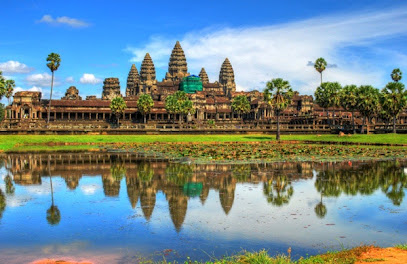
Battle of Lanka Gallery
0.1 km
Discover Khmer history through art at Siem Reap's Battle of Lanka Gallery, showcasing the epic Ramayana tale in a serene setting.

Rainbow Bridge
0.7 km
A vibrant and picturesque bridge in Siem Reap, perfect for serene walks and stunning photos amidst Cambodia's cultural heartland.
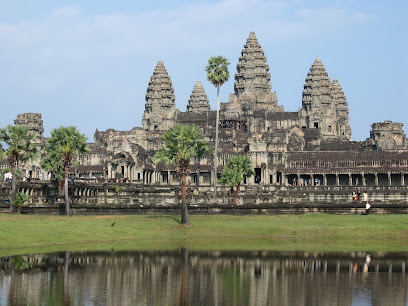
Phimeanakas
3.9 km
Explore Phimeanakas, the 'Celestial Temple' in Angkor Thom, a pyramid-shaped Hindu temple with rich history and panoramic views.
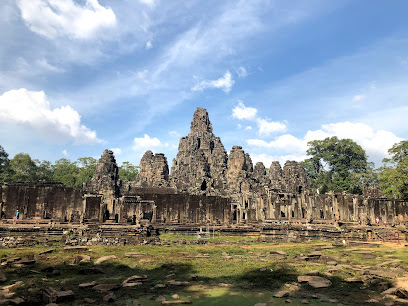
Prasat Khleang Khang Cheung (Prasat North Khleang)
3.9 km
Explore Prasat Khleang Khang Cheung in Angkor, a remarkable Khmer temple showcasing ancient architecture and cultural significance.
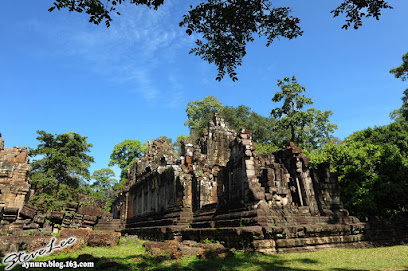
Prasat Ta Keo
3.9 km
Explore Prasat Ta Keo, a monumental sandstone temple in Angkor, showcasing Khmer architecture's transition with its unique, unfinished beauty.

Banteay Kdei
3.9 km
Explore the tranquil beauty of Banteay Kdei, a historical Buddhist temple in Angkor, rich in culture and stunning architecture.
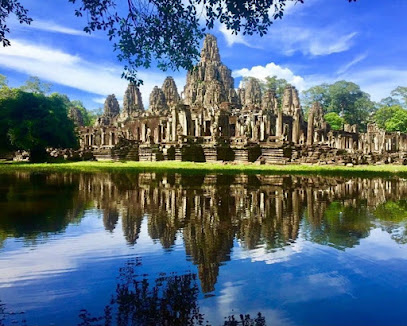
Le Méridien Angkor
4.0 km
Experience luxury and culture at Le Méridien Angkor, your gateway to the temples of Angkor and the heart of Siem Reap.
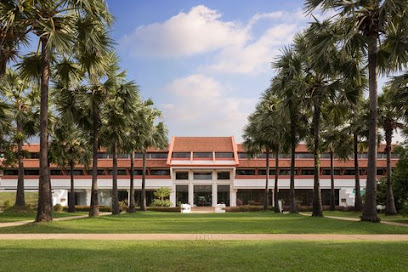
Preah Ponlea Sdach Komlong (Terrace Of The Leper King)
4.0 km
Explore the Terrace of the Leper King in Angkor Thom: Intricate carvings, mysterious statues, and a glimpse into Cambodia's ancient Khmer past.
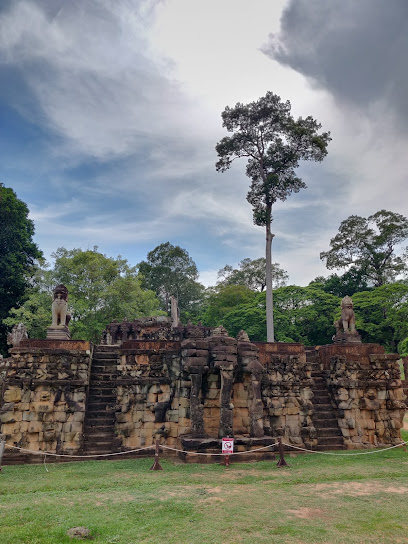
Thommanon
4.0 km
Discover Thommanon Temple: A perfectly preserved 12th-century Hindu gem showcasing intricate Khmer carvings near Angkor Thom's Victory Gate.
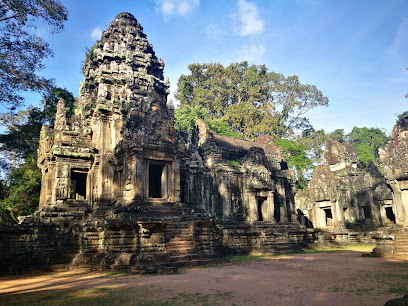
Thommanon Temple
4.0 km
Discover Thommanon Temple, a compact yet exquisite 12th-century Hindu sanctuary near Angkor Thom, showcasing remarkable Khmer carvings and architecture.
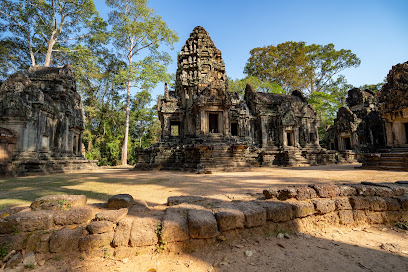
Prasat Preah Pithu Group
4.0 km
Discover the quiet beauty of Prasat Preah Pithu, a collection of ancient temples within Angkor Thom offering intricate carvings and a peaceful atmosphere.
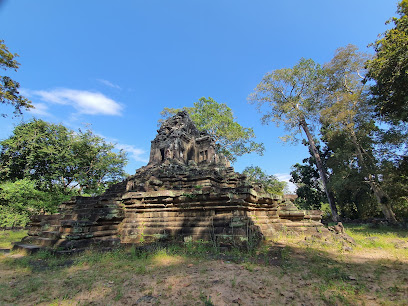
Mane Colonial Classic
4.1 km
Experience colonial elegance in Siem Reap: luxurious rooms, tranquil gardens, and a convenient location near Angkor's iconic temples.

Khmer Ceramics & Fine Arts Centre
4.1 km
Discover the ancient art of Khmer ceramics in Siem Reap: witness the revival, create your own pottery, and support local artisans.

Angkor Panorama Museum
4.2 km
Immerse yourself in the grandeur of the Khmer Empire at the Angkor Panorama Museum in Siem Reap.
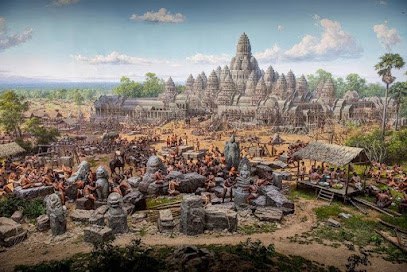
Unmissable attractions to see
Terrace of Honor
0.2 km
Discover the historical richness of the Terrace of Honor in Siem Reap, a must-visit landmark showcasing Cambodia's cultural heritage.
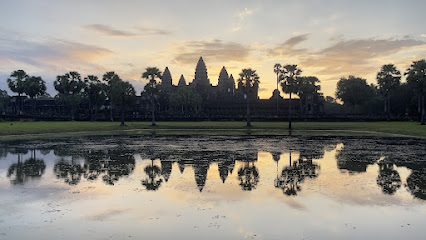
Northern Library
0.4 km
Discover the Northern Library, a stunning heritage site in Krong Siem Reap, showcasing Cambodia's rich history and architectural brilliance.
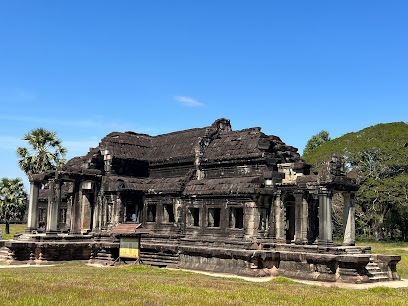
Prohm Kel Temple
1.0 km
Explore the enchanting Prohm Kel Temple, a stunning blend of Buddhist and Hindu architecture nestled in the heart of Angkor's archaeological wonders.
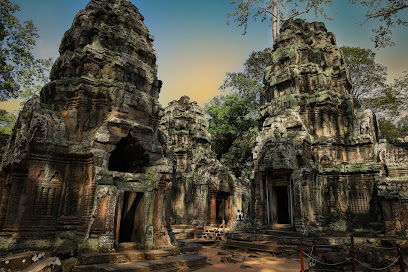
Prasat Rorng Ramong
1.3 km
Explore Prasat Rorng Ramong, a serene historical site in Angkor, showcasing the timeless beauty of Khmer architecture amidst lush landscapes.
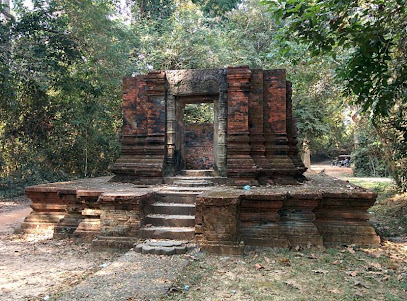
Baksei Chamkrong Temple
1.7 km
Discover the spiritual serenity and architectural beauty of Baksei Chamkrong Temple in the heart of Angkor, Cambodia.

Phnom Bakheng
1.7 km
Experience breathtaking sunsets and explore the ancient ruins at Phnom Bakheng, a majestic Hindu temple in the heart of Angkor Archaeological Park.
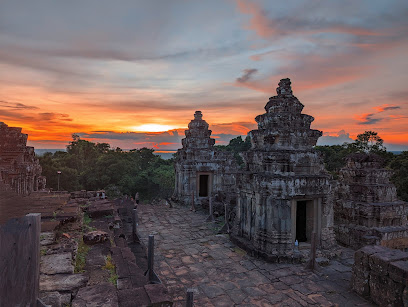
Tonle Om South Gate Bridge
1.8 km
Experience the historical charm and scenic beauty of Tonle Om South Gate Bridge in Krong Siem Reap, a must-visit landmark for all travelers.
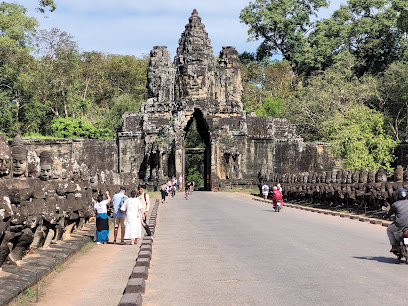
Prasat Chrung Southeast
1.8 km
Discover the enchanting Prasat Chrung Southeast, a serene historical site in Angkor, Cambodia, showcasing the beauty of Khmer architecture and heritage.
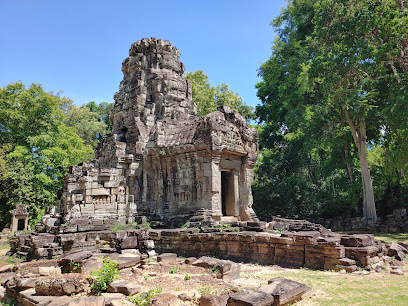
Tonle Om Gate (Southern Gate)
1.9 km
Discover the stunning Tonle Om Gate, a magnificent historical landmark at Angkor Thom, showcasing rich Khmer heritage and breathtaking architecture.
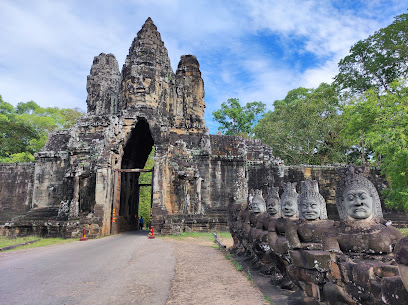
Prasat Bei
1.9 km
Explore the serene beauty of Prasat Bei, a hidden Hindu temple gem in Angkor Archaeological Park, Cambodia's cultural treasure.
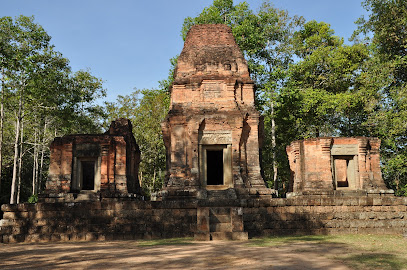
Kongkear Angkor
2.0 km
Experience Angkor Thom from a unique perspective with Kongkear Angkor's traditional Khmer boat tours, blending history, nature, and culture.
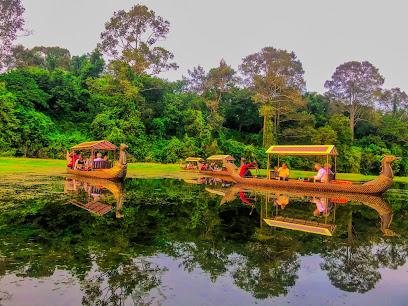
Robean Angkor tour
2.7 km
Explore Angkor's iconic temples and hidden gems with personalized tours led by passionate local experts. Discover the Khmer Empire's rich history and artistry.

Prasat Chrung Southwest
2.9 km
Explore the serene Prasat Chrung Southwest, a hidden Buddhist temple within Angkor Thom, offering tranquility and rich Khmer architecture.
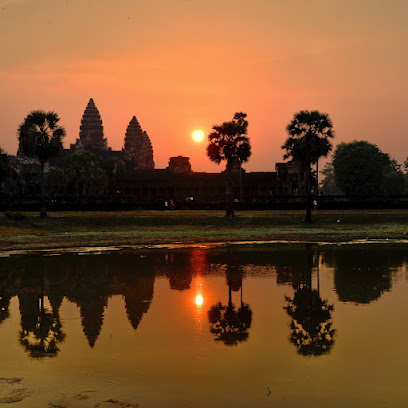
Ta Prohm West Gate
3.2 km
Explore the mystical Ta Prohm West Gate, where ancient Khmer architecture meets the enchanting embrace of nature's roots in Krong Siem Reap.
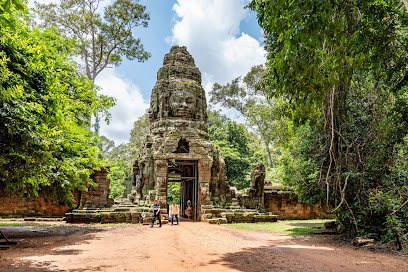
VIMEAN SOKHA MUSEUM
3.2 km
Uncover the rich tapestry of Cambodian history and culture at Vimean Sokha Museum in Siem Reap, a must-visit for every traveler.
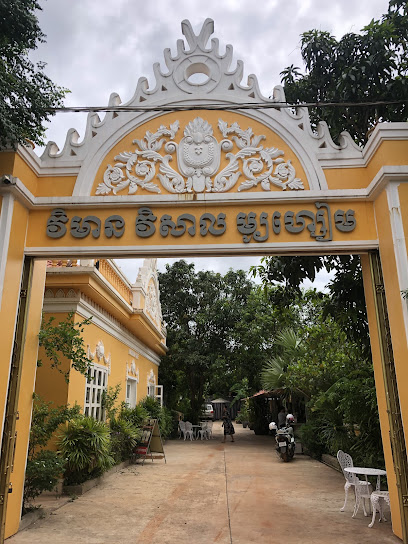
Essential places to dine
New Hope Restaurant
3.6 km
Discover New Hope Restaurant: Where Authentic Cambodian Cuisine Meets Community Empowerment in Siem Reap.
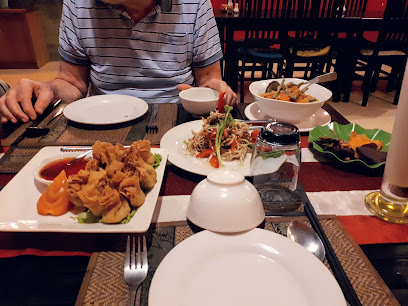
Triple K Angkor Restaurant
4.0 km
Experience authentic Cambodian cuisine at Triple K Angkor Restaurant in Siem Reap - where every dish tells a story.
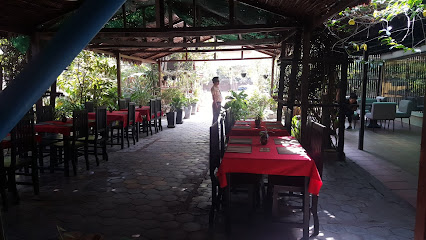
Buffet Phum Yerng
4.1 km
Experience the vibrant flavors of Cambodia at Buffet Phum Yerng, where family-friendly dining meets culinary delight in Krong Siem Reap.
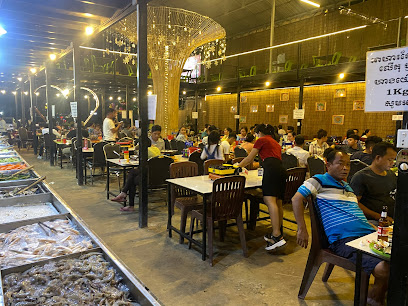
Chita’s cafe
4.3 km
Discover authentic Cambodian flavors and local crafts at Chita’s Cafe in Village 17255 – where every dish tells a story.
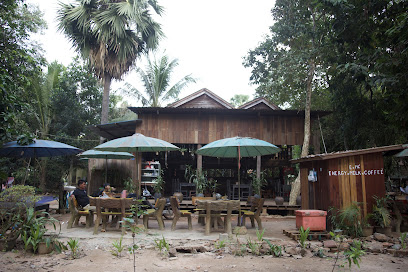
Mouhot's Dream
4.3 km
Discover the essence of French cuisine at Mouhot's Dream in Siem Reap – where elegance meets flavor in every delightful dish.
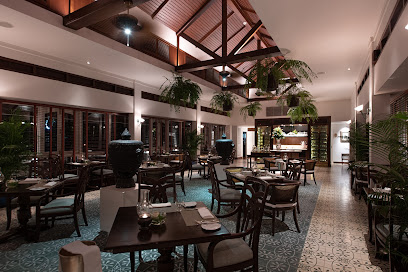
Mahob Cuisine
4.4 km
Experience the rich flavors of Cambodia at Mahob Cuisine – where tradition meets taste in an inviting atmosphere.
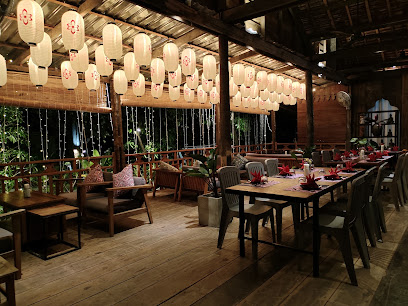
Ktom Sre Khmer Food - អាហារដ្ឋាន ខ្ទមស្រែ ស្រះស្រង់ខាងត្បូង
4.4 km
Discover the flavors of Cambodia at Ktom Sre - an organic family-friendly restaurant offering authentic Khmer dishes.
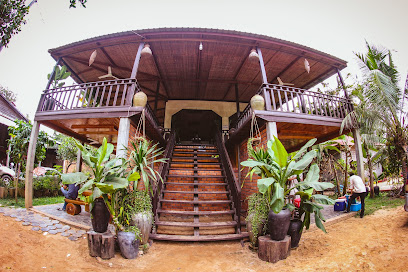
Changkran Khmer Restaurant
4.6 km
Experience authentic Cambodian cuisine at Changkran Khmer Restaurant - where tradition meets fine dining in an inviting atmosphere.
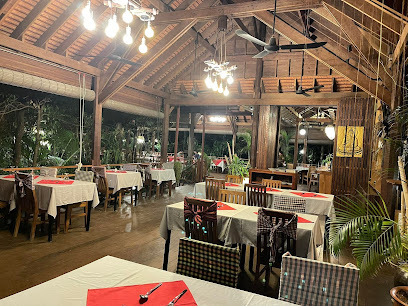
Sisters Yam
4.6 km
Experience exquisite seafood dining at Sisters Yam in Siem Reap - where fresh flavors meet Cambodian culinary traditions.
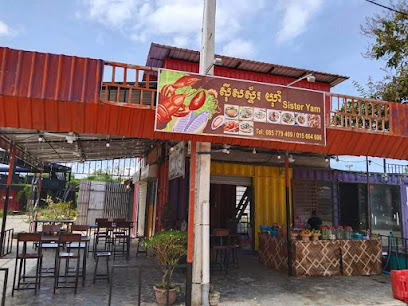
Khmer Family Restaurant
4.7 km
Experience authentic Cambodian flavors at Khmer Family Restaurant in Siem Reap—perfect for families and food enthusiasts.

Khmer Village Restaurant
4.7 km
Experience authentic Cambodian cuisine at Khmer Village Restaurant in Siem Reap, where traditional flavors meet warm hospitality.
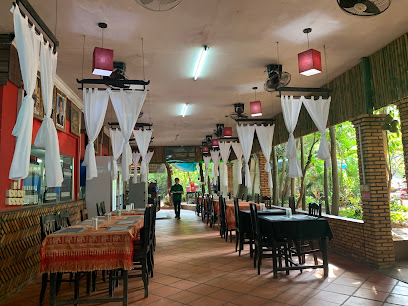
Ptes Borann Restaurant
4.9 km
Experience genuine Cambodian cuisine at Ptes Borann Restaurant in Srah Srang - where flavor meets tradition.
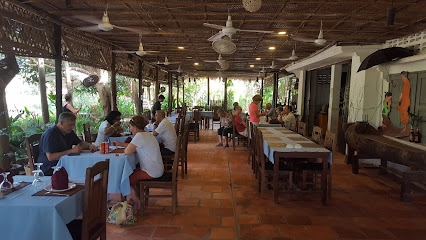
Pho Yong Restaurant
5.0 km
Discover authentic Vietnamese flavors at Pho Yong Restaurant in Krong Siem Reap - a culinary gem offering delightful Southeast Asian cuisine.
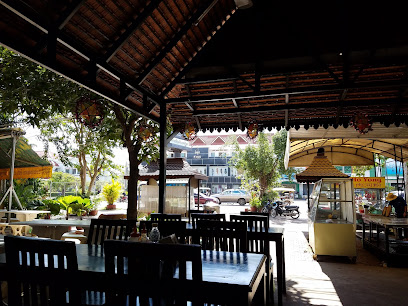
The Khmer BBQ Suki
5.0 km
Experience the authentic taste of Cambodia with delicious barbecue at The Khmer BBQ Suki in Krong Siem Reap.
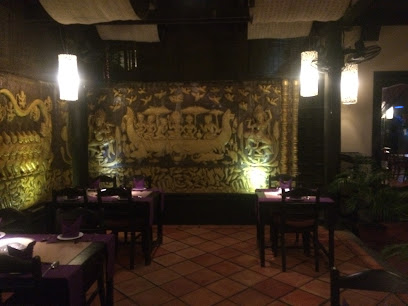
Nary Restaurant
5.0 km
Experience authentic Cambodian cuisine at Nary Restaurant in Krong Siem Reap - where every dish tells a story.
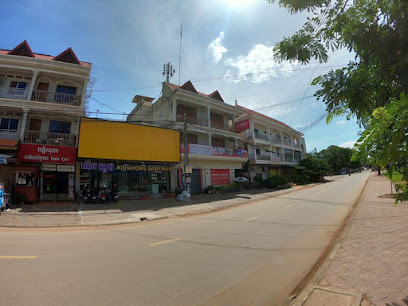
Markets, malls and hidden boutiques
Angkor Pavis Souvenir & Mart 2
1.1 km
Discover unique Cambodian gifts and souvenirs at Angkor Pavis Souvenir & Mart 2, a treasure trove in Siem Reap showcasing local craftsmanship.
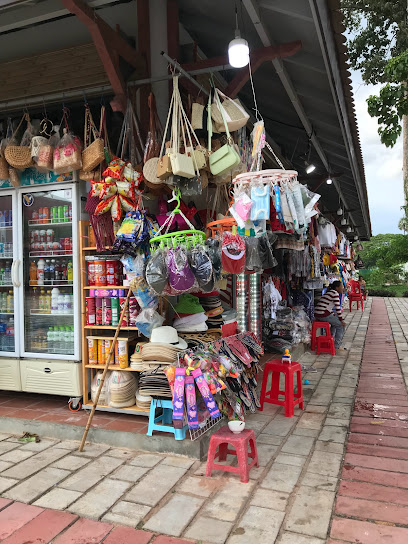
Jayav Art
3.7 km
Uncover the essence of Cambodia at Jayav Art, your go-to souvenir store for unique handmade crafts and cultural treasures in Siem Reap.
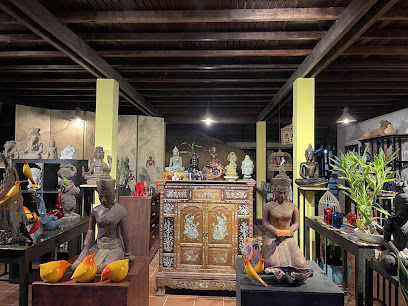
The Cocoon House Art Gallery, Concept Store, Skateshop and Vintage - by Cocoon Limited
3.8 km
Experience the creative fusion of art, fashion, and skate culture at The Cocoon House, a unique destination in Krong Siem Reap.
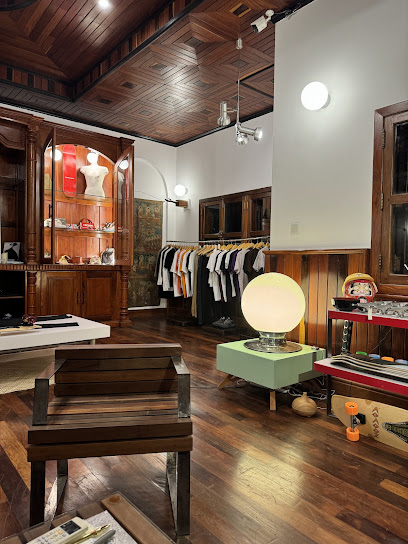
Sam Orn silver handicraft souvenir shop
4.3 km
Explore the craftsmanship of Cambodia at Sam Orn Silver Handicraft Souvenir Shop, where exquisite silver treasures await every traveler.
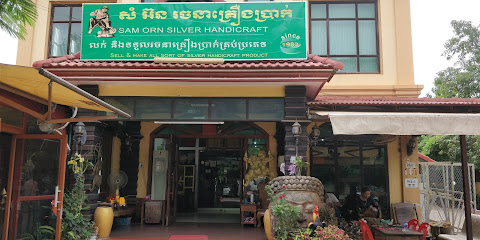
Angkor Wat Boutique
4.6 km
Explore Angkor Wat Boutique for authentic Cambodian souvenirs and crafts, capturing the essence of Cambodia's rich culture and artistry.
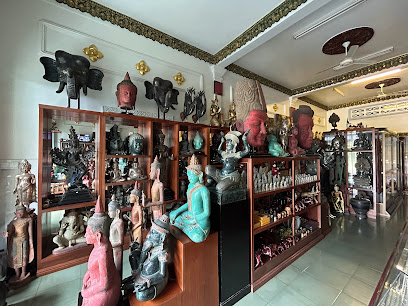
Chum Theany Angkor Souvenir Shop
4.8 km
Discover authentic Cambodian handicrafts and unique souvenirs at Chum Theany Angkor Souvenir Shop in Siem Reap, a treasure for every traveler.

Khmer Empire
4.9 km
Explore exquisite jewelry inspired by the rich cultural heritage of the Khmer Empire in Siem Reap, Cambodia.
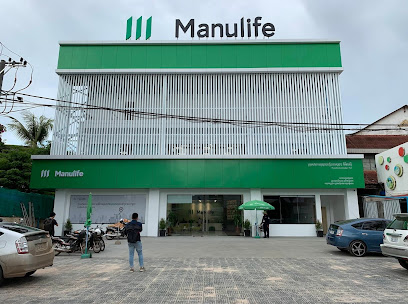
Cambodian cottage industries
5.0 km
Explore the rich craftsmanship of Cambodia at Cambodian Cottage Industries, your destination for unique gifts and authentic handicrafts.

Cartier Siem Reap
5.1 km
Experience luxury shopping at Cartier Siem Reap, home to exquisite jewelry, fashion accessories, and fine perfumes in the heart of Cambodia.

Coconut Street store
5.3 km
Explore the vibrant Coconut Street Store in Siem Reap for unique handicrafts and local delicacies that celebrate Cambodian culture.
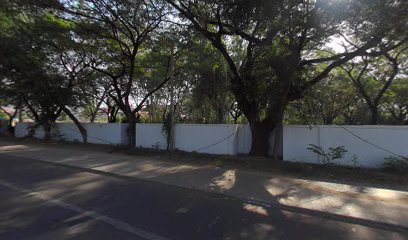
SaStrey
5.6 km
Explore SaStrey in Siem Reap for authentic Cambodian souvenirs and support local artisans with every purchase.
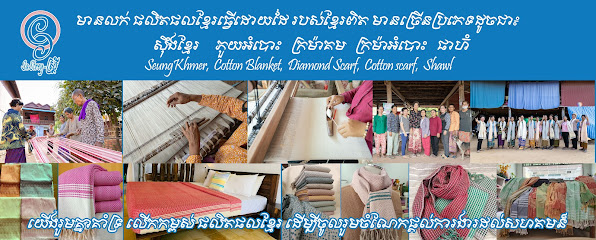
Vin Vin Shop2
5.6 km
Discover unique clothing that blends traditional Cambodian culture with modern fashion at Vin Vin Shop2 in Krong Siem Reap.

Flower Shop
5.6 km
Explore the serene Flower Shop in Krong Siem Reap for stunning blooms and unique Buddhist supplies, blending beauty and culture in one delightful stop.
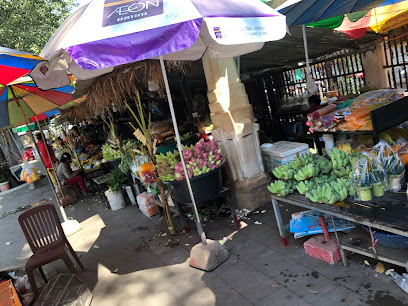
Level Store
5.6 km
Discover the best of Cambodian fashion at Level Store in Siem Reap, where tradition meets modern style in an unforgettable shopping experience.
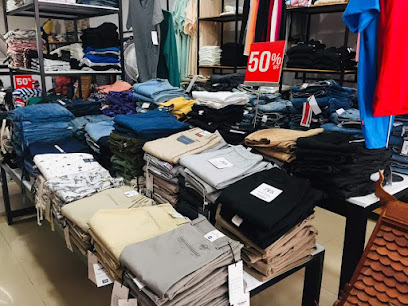
MINISO The Heritage Walk
5.6 km
Explore trendy fashion accessories and unique finds at MINISO The Heritage Walk in Krong Siem Reap, where style meets affordability.

Essential bars & hidden hideouts
Elephant Bar
5.4 km
Indulge in handcrafted cocktails and a vibrant atmosphere at Elephant Bar, the ultimate cocktail destination in Siem Reap.

Akas Rooftop Sky Bar by The Twizt
6.1 km
Experience breathtaking views, exquisite cocktails, and a vibrant atmosphere at Akas Rooftop Sky Bar in Krong Siem Reap.
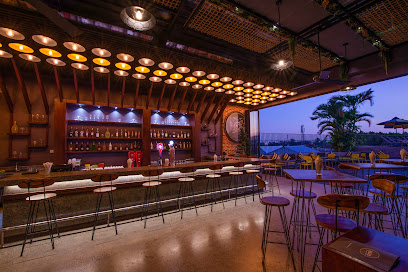
JD's Siem reap
6.3 km
Experience the vibrant nightlife at JD's Siem Reap, the ultimate bar for cocktails and local culture in the heart of Cambodia.
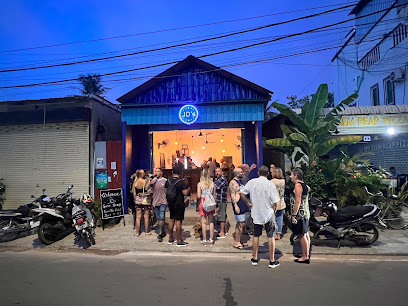
TREE bar
6.4 km
Experience the vibrant nightlife at TREE Bar in Krong Siem Reap, where eclectic drinks and lively ambiance create unforgettable memories.

Barcode Bar Siem Reap
6.4 km
Unwind with a cocktail at Barcode Bar Siem Reap, where vibrant nightlife meets exceptional service in a lively atmosphere.
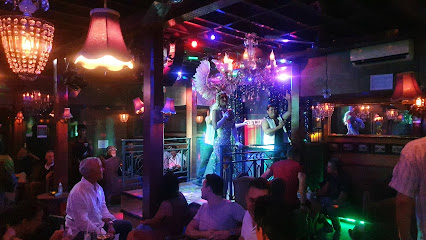
Long's Bar
6.5 km
Discover the vibrant atmosphere and unique cocktails at Long's Bar, a must-visit destination in Siem Reap for travelers and locals alike.
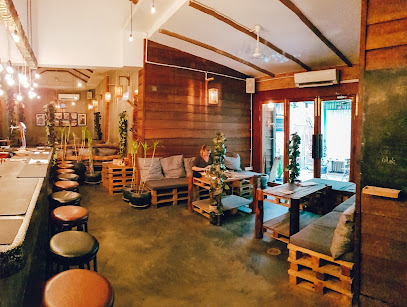
Cozy Bar
6.5 km
Discover the vibrant energy of Cozy Bar in Siem Reap, where affordable drinks and a friendly atmosphere await every traveler.

Silk Garden Bar and Restaurant
6.5 km
Indulge in scrumptious grilled dishes in a cozy setting at Silk Garden Bar and Restaurant, a true gem in Krong Siem Reap.
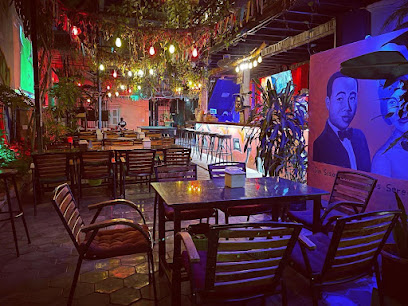
ASANA OLD WOODEN HOUSE Cocktail Bar
6.5 km
Experience the perfect blend of Asian flavors and crafted cocktails at ASANA OLD WOODEN HOUSE, a cozy bar in the heart of Siem Reap.
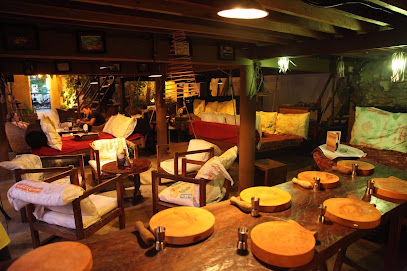
Homie Pub Siem Reap
6.5 km
Discover the lively atmosphere and refreshing drinks at Homie Pub, a favorite spot for travelers in Siem Reap's vibrant nightlife scene.
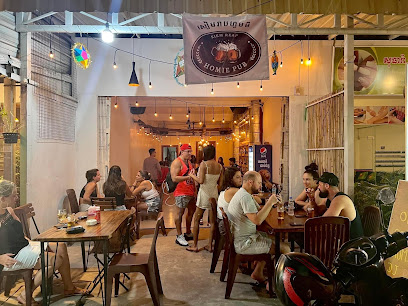
Laundry
6.5 km
Discover Siem Reap's lively music scene at Laundry, where great vibes, affordable drinks, and fantastic live performances come together.
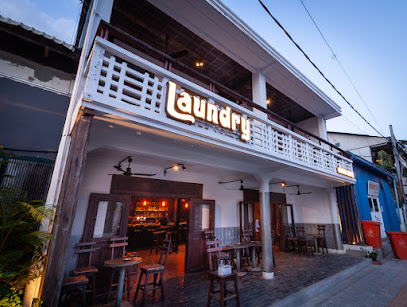
The Angkor What? Bar
6.5 km
Discover the vibrant nightlife at The Angkor What? Bar in Siem Reap, where fun meets affordable drinks and a lively atmosphere.

Miss Wong Cocktail Bar
6.5 km
Unwind at Miss Wong Cocktail Bar, where creative cocktails and authentic dim sum meet in a stylish, vibrant atmosphere in Krong Siem Reap.
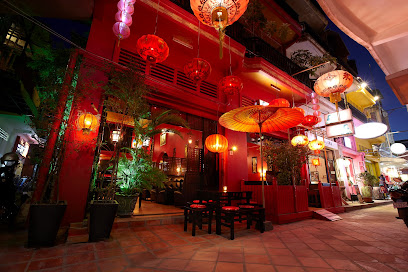
SO 26
6.5 km
Experience the vibrant flavors of Asian fusion cuisine and lively nightlife at SO 26, the must-visit bar and restaurant in Krong Siem Reap.

The Best Friend Bar & Cafe
6.6 km
Discover the charm of The Best Friend Bar & Cafe in Krong Siem Reap, where cozy ambiance meets delightful drinks and friendly service.
